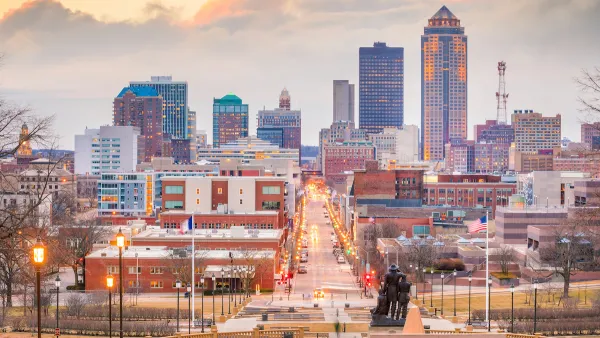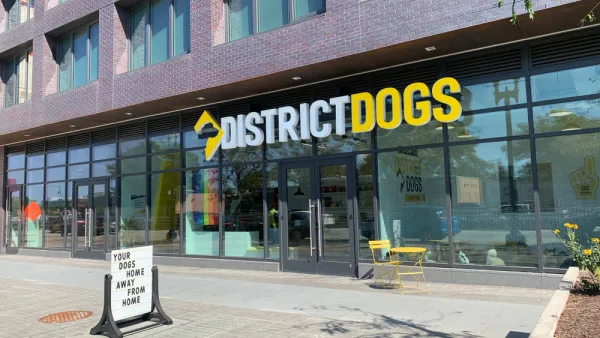In the wealthy community of Spring Valley, just inside the western boundaries of the District of Columbia, residents are opposing a proposed development by claiming the site—a parking lot—is a historic landmark.
Aaron Wiener begins his coverage of the parking lot as historic landmark by telling the story of its original development in 1942, as a pioneering suburban retail landmark. The site has changed hands, original developed as a Garfinckel's and some features of the neighborhood have also changed (the end of racial covenants, for instance), but developers are still interested in the site.
"Last fall, Miller sold the Spring Valley Shopping Center on Massachusetts Avenue NW, anchored by the Crate & Barrel that took over the old Garfinckel’s space, to the Washington Real Estate Investment Trust. WRIT, as it’s known, recently announced plans to erect a two-story building on a portion of the parking lot between Crate & Barrel and Capital One Bank, with ground-floor retail topped by offices or additional retail."
And here's the rub. Residents would rather keep the parking lot, and they're pulling the historic preservation card to make the case. The argument isn't that this particular parking lot has some unique design or environmental feature that makes it outstanding. Rather, "what some neighbors do claim is that because the parking lot was built at a time of car-focused retail development, it is an historic landmark," according to Wiener.
Weiner goes on to provide a lot more detail about the specific example of the Spring Valley case study, as well as the larger question about the nature of historic preservation it raises. For the record, the case for parking lots as a signature feature of American development history was made in detail by David Rotenstein on the National Council on Public History website in 2014.
FULL STORY: A Lot to Lose: Can a Parking Lot Be an Historic Landmark?

National Parks Layoffs Will Cause Communities to Lose Billions
Thousands of essential park workers were laid off this week, just before the busy spring break season.

Retro-silient?: America’s First “Eco-burb,” The Woodlands Turns 50
A master-planned community north of Houston offers lessons on green infrastructure and resilient design, but falls short of its founder’s lofty affordability and walkability goals.

Delivering for America Plan Will Downgrade Mail Service in at Least 49.5 Percent of Zip Codes
Republican and Democrat lawmakers criticize the plan for its disproportionate negative impact on rural communities.

Test News Post 1
This is a summary

Test News Headline 46
Test for the image on the front page.

Balancing Bombs and Butterflies: How the National Guard Protects a Rare Species
The National Guard at Fort Indiantown Gap uses GIS technology and land management strategies to balance military training with conservation efforts, ensuring the survival of the rare eastern regal fritillary butterfly.
Urban Design for Planners 1: Software Tools
This six-course series explores essential urban design concepts using open source software and equips planners with the tools they need to participate fully in the urban design process.
Planning for Universal Design
Learn the tools for implementing Universal Design in planning regulations.
EMC Planning Group, Inc.
Planetizen
Planetizen
Mpact (formerly Rail~Volution)
Great Falls Development Authority, Inc.
HUDs Office of Policy Development and Research
NYU Wagner Graduate School of Public Service





























